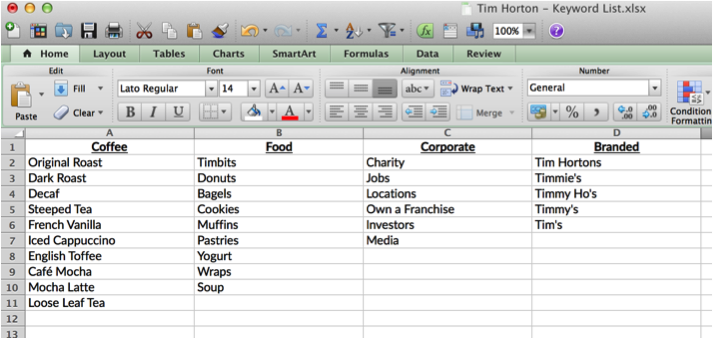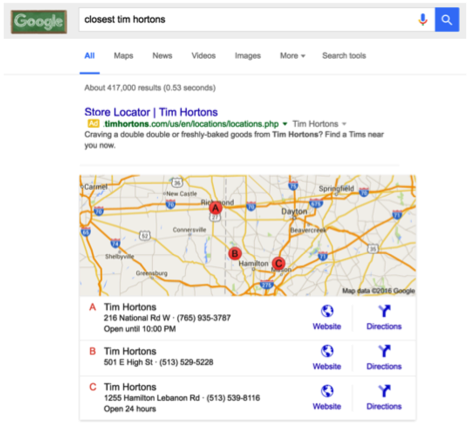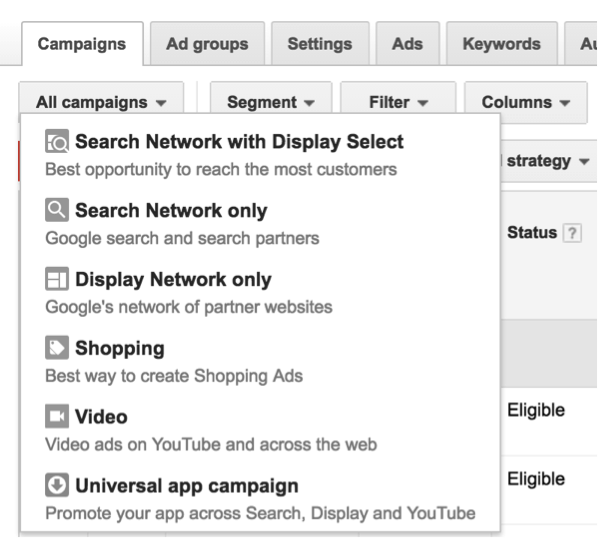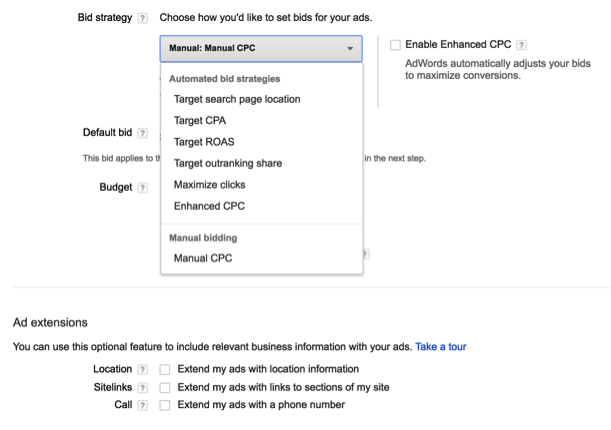We all have tasks that reside in the Wild West fringes of our calendar, where idealistic intentions cross arms with FOMO. For those that have been asleep for the last couple of years, FOMO is the fear of missing out. When you are a small business owner or just getting started in the world of marketing, that fear of not jumping on the latest trends can result in product obscurity. But no pressure, right? For those that are new to the world of paid search, gathering up the courage (and time) to develop an online paid search ad strategy can feel like a daunting task.
For those that want to make the leap into the world of online advertising, this is the guide for you! I will outline the theoretical work you need to complete before posting an ad online, and will give you a guide to navigate setting up your first campaign.
However, before we get into the basics of setting up a campaign, you have to look deep into your soul and answer a few questions.
1) Does your website have a landing page with concise information that echoes your ad copy and features a clear call to action?
2) Do you have the resources to meet the needs of your online customers? For example, if you offer a service do you have someone who can answer the phone and take orders? If you have a product, is your shopping cart functional and free of any bugs that will hinder online purchases?
3) Can you commit to the cost of a paid search campaign, with a budget of 3 – 6 months? In the linked article above, our Senior Digital Advisor at Hanapin recommends using competitive research tools and Google or Bing’s Keyword Planner to get a rough estimate of your budget.
4) If your colleague was tapping his pen on the desk, how long would you wait before throwing the pen out the window? No, seriously, I am not sure how to handle this dilemma.
With the foundations covered, you can open AdWords and Bing accounts and get started on building your ads.
1) The Keyword List And Account Structure
Start by developing a keyword list based on your company’s products and services. The best place to start is by looking at your website and grabbing words from the actual site. These keywords will help you create a breakdown of campaigns for your account. You will soon learn that account structure is a highly disputed aspect of paid search, but just get a simple framework completed before analyzing the data and segmenting your campaigns further.
Let’s use an example that is near to my heart: Tim Hortons. When looking for possible words that customers will use to describe Tim Hortons, other than delicious, we need to think about the core themes of goods and services that Tim Hortons is offering: coffee and food. Since Tim Hortons is one of Canada’s most well-known brands, it is important to also have a branded keywords list for those that will be searching for Tim Hortons, and all nickname variations. Even if your product is relatively unknown and you might question the rationale behind paying to trigger ads that might already show in organic listings, it is important to bid on your brand terms because:
- Brand traffic is cheap and will attract the attention of people that are very close to converting
- Serving a brand ad will help you take up more real estate on the search engine results page by having all your organic ads plus the top of the page paid ad
- If your competitors are bidding on your brand terms they might be distracting a potential customer away from their original intention, buying your product.

As you are pulling possible keywords from your site, think about the best way to lump those words into categories. Sometimes looking at the site map will help! Be sure to include any possible variations. For example, if your customers frequently use the word java instead of coffee, make sure you include those keywords in your list.


The account structure might evolve naturally from your keyword list, or you can have a look at some of the examples below to give you an idea of how to develop your campaigns:
- Products and services
- Geography
- Seasonality of your products
- Top performing products
- Customer type
- Keyword match type
2) Why Are People Looking For You?
The next step is to ask yourself, what do people want from my company? This is a fun exercise to conduct with actual customers in a focus group setting to find out why they would take to their desktops and phones to look up your company. If you can’t get a focus group to come in, there are several free resources online that will record user interaction with your site and this might answer the fundamental question: What information do people want from our site?
When you understand what your customer’s want, it will help you further develop your keyword lists so you can bid on intention keywords. For example, Tim Hortons knows that people can not live without their daily fix of Timbits, so they have a location finder on their main page and they bid on words like “closest Tim Hortons.” Also, consider the underlying needs of the customer. Is there a problem that is commonly solved with your services? Try including keywords that call out that problem.

3) Develop Ad Groups and Ads
With your chosen account structure, you have a list of campaigns that need ad groups and ads. It is a good common practice to keep the number of ad groups manageable, under 4-6 ad groups per campaign is easy to maintain. In our Tim Hortons example, under the campaign “Coffee” they might have ad groups for:
- Coffee
- Tea
- Iced drinks
- Smoothies
From these ad groups, they can develop ads that specifically speak to the types of drinks in each subcategory. For instance, under the ad group of “Tea,.” they might create ads for steeped tea, loose leaf tea, chai, green tea, and ice tea (not to be confused with Ice-T).
4) Choosing The Campaign Settings
When you create your new campaigns, the first question you will be asked is what kind of campaign are you trying to create? Do you want to have a campaign that is just for Search ads, Display ads, Shopping or Video? It is a good idea to start slow with the Search Network only and develop Display ads later. Besides, seeing the performance of your Search ads can help you develop a stronger Display ad strategy.

You will also have to answer questions about location and languages, devices you want your ads to show on and bids and budgets. Budgeting is a tricky subject because daily budgets that are too low will cap your performance. If you have a top range for your monthly budget, you will know the maximum budget you can allocate per day. In the beginning, you will likely spread your daily budget evenly across all your campaigns, but in the future try allocating budget based on the likelihood of success.
You will also have to pick a bid strategy and you might be tempted to use a pre-set algorithm created by Google or Bing, but if your campaign is new you should gather some data under your belt before you let a computer make your bidding decisions. For now, go manual and set your own targets and keep a tight rein on your spending.
A newer addition to the setup options is the chance to create ad extensions, such as location, sitelinks and call extensions. Take advantage of as many callout extensions as possible. The more information you can share on the SERP the better!

In the advanced settings, you will also have a chance to select ad rotation and scheduling. With rotation, it is preferable to have even ad rotation in the beginning and after analyzing your performance, consider optimizing for clicks or conversions based on Google’s calculations.
5) Write Your Ads!
Now is your chance to channel your inner Don Draper. Put down that whiskey, we are going to tap into his creative side. We want to entice people into clicking your ad, however, we also want to be careful about the language we use. Google and Bing will reward you if you have highly relevant ads with text that echo the language that is actually on the landing page. What is your reward? A better Quality Score in AdWords or Quality Index in Yahoo and Bing. This is a numeric variable that helps to influence the order that ads are listed, how often it shows up in the auction and cost per click of your ads. Some can get obsessed with Quality Score, but I prefer to think of it as a catalyst for making improvements to your ads but it is not necessarily going to make your life perfect.
The ads have a headline (25 characters long), description line 1 (35), description line 2 (35), and Display URL (35). If your landing page has a URL that is longer than 35 characters you can use the Final URL field, as long as your Display and Final URL have the same domain. Here are some tips to writing ad copy, but I would urge you to check out more online resources for further detailed help:
- Include some type of punctuation at the end of description line 1. Ads with proper punctuation become eligible for extended headlines, which some argue have better click through rates. An extended headline takes description line 1 and adds it to the end of your headline, hence the need for a grammatically correct end to the sentence.
- Pretend you are a customer and search for your product. Look at the competitor ads and see if you can come up with a more attention-grabbing headline.
- Include a clear call to action in the description line 2, such as shop now, buy now, learn more or signup today.
- Think about the USP, unique selling point, of your product and call out these features in ad copy. Try testing different ads with different features and benefits and see if one feature out motivates your customers. You might be surprised with what customers are attracted to.
- Use the same language as your landing page and keywords from your list to help boost your Quality Score.
- Use a thesaurus to give you ideas for shortening your language. 35 characters run out pretty fast.
Final Thoughts
Those are some of the basic steps for creating a campaign with ad groups and ads, but the work doesn’t stop there. Keep an eye on your search term reports to weed out unexpected and costly unnecessary traffic by excluding certain words and banishing them to the negative list. Once you have had enough traffic, you can start making bigger decisions about bid strategies, ad testing, new campaigns and further segmenting your existing campaigns. There are endless possibilities for scrutiny but just remember that small incremental changes are the best way to see results in Paid Search because it is a marathon, not a sprint.



